Unraveling the Power of Double Ridge Waveguide Transitions: A Game-Changer in Microwave Engineering
In the ever-evolving landscape of microwave engineering, Double Ridge Waveguide Transitions have emerged as revolutionary components that are redefining signal transmission capabilities. These sophisticated devices serve as critical interfaces between different waveguide sizes or types, allowing for seamless electromagnetic transmission across varying dimensions. With their distinctive ridge design, Double Ridge Waveguide Transitions optimize electromagnetic field propagation while significantly reducing signal loss—a combination that has made them indispensable in high-frequency applications ranging from satellite communications to advanced defense systems. As we delve into the transformative potential of these components, we'll explore how their unique design characteristics and versatile functionality continue to push the boundaries of what's possible in modern microwave systems.
Understanding the Fundamentals of Double Ridge Waveguide Technology
The Engineering Principles Behind Ridge Waveguide Design
The Double Ridge Waveguide Transition represents a significant advancement in transmission line technology, built upon sophisticated electromagnetic principles. At its core, the component features two ridges extending inward from opposite walls of a rectangular waveguide, creating a distinctive cross-sectional profile that fundamentally alters how electromagnetic waves propagate through the structure. This specialized geometry serves a crucial purpose: it effectively lowers the cutoff frequency while maintaining the same outer dimensions as conventional rectangular waveguides. The physics behind this design leverages the concentrated electric field between the ridges, which enables a wider operational bandwidth—often spanning multiple octaves—compared to standard waveguides that typically operate within a 1.5:1 frequency ratio. Advanced Microwave Technologies Co., Ltd. has perfected this design, manufacturing Double Ridge Waveguide Transitions that maintain exceptional field distribution characteristics across frequencies ranging from 1 GHz to an impressive 110 GHz. The precise ridge geometry is meticulously engineered, with dimensions calculated to optimize impedance matching and minimize insertion loss. This fundamental design approach creates a component that doesn't merely connect different waveguide sections but enhances the overall system performance, making it indispensable for applications where bandwidth and signal quality are paramount concerns.
Manufacturing Precision and Material Considerations
The production of high-performance Double Ridge Waveguide Transitions demands extraordinary precision and material expertise—factors that Advanced Microwave Technologies has mastered over its 20+ years in the industry. The manufacturing process begins with material selection, where conductivity, thermal stability, and mechanical integrity are balanced against weight and cost considerations. ADM offers these transitions in aluminum for lightweight applications, copper for superior conductivity, and brass for excellent machinability and corrosion resistance. The fabrication process involves high-precision CNC machining with tolerances often measured in microns, as even slight deviations can significantly impact RF performance. The internal ridges must be machined with exceptional accuracy, maintaining consistent dimensions throughout to prevent impedance discontinuities that could introduce unwanted reflections. Following machining, these components undergo meticulous surface finishing—typically silver or gold plating—to enhance conductivity and provide environmental protection. The plating thickness is carefully controlled, as it directly affects skin effect at high frequencies. Advanced Microwave's Double Ridge Waveguide Transitions are manufactured under strict ISO:9001:2008 certified processes, ensuring consistent quality and reliability. This attention to manufacturing detail is essential for producing components that can maintain a VSWR of ≤1.20:1, a specification that guarantees minimal signal reflections and maximum power transfer across the waveguide interface—particularly critical in high-power or noise-sensitive applications.
Bandwidth Enhancement and Performance Metrics
The revolutionary aspect of Double Ridge Waveguide Transitions lies in their exceptional bandwidth capabilities, which far exceed those of conventional waveguides. This bandwidth enhancement represents one of the most significant advantages of these components, especially in modern systems that demand increasingly broader operational frequency ranges. The specialized ridge structure creates a lower cutoff frequency for the dominant mode while raising the cutoff frequency of higher-order modes, effectively widening the single-mode operation bandwidth by factors of 3:1 or greater. Advanced Microwave Technologies' Double Ridge Waveguide Transitions capitalize on this principle, providing seamless performance across extensive frequency ranges that would otherwise require multiple conventional waveguide sections. Performance is quantified through several critical metrics that engineers rely on when integrating these components. Insertion loss—typically measured in decibels per unit length—is kept exceptionally low in ADM's transitions, ensuring maximum power transfer between connected systems. The low VSWR specification (≤1.20:1) indicates minimal signal reflection, which translates directly to improved system efficiency. Phase linearity across the operating bandwidth ensures signal integrity for complex modulation schemes, while power handling capabilities accommodate demanding applications. ADM's Double Ridge Waveguide Transitions undergo rigorous testing in laboratories equipped with advanced measurement equipment up to 110 GHz, validating their performance across standard variants such as WRD180, WRD350, WRD500, and WRD750, as well as in custom configurations designed to meet specific customer requirements.

Applications and Industry Impact of Double Ridge Waveguide Transitions
Revolutionizing Satellite Communication Systems
Double Ridge Waveguide Transitions have transformed satellite communication infrastructure by providing previously unattainable frequency flexibility and signal quality. These components have become foundational elements in both ground-based stations and satellite payloads, where their broad frequency compatibility enables multi-band operations without requiring duplicate hardware systems. In satellite uplink and downlink chains, Double Ridge Waveguide Transitions facilitate seamless connections between different sections of RF subsystems, maintaining signal integrity across varied interfaces while minimizing insertion losses that would otherwise compound throughout the system. The enhanced signal stability offered by Advanced Microwave's Double Ridge Waveguide Transitions ensures consistent data transmission rates even under challenging operating conditions, which is particularly crucial for high-throughput satellites handling gigabits of data per second. The precision ridge geometry optimizes electric field distribution, enabling these transitions to handle the substantial power levels required for long-distance satellite communications while maintaining signal fidelity. The compact design of these transitions—made possible by the efficient ridge structure—contributes to significant weight and space savings in satellite payloads, where every gram and cubic centimeter carries substantial launch cost implications. Advanced Microwave Technologies' customizable designs allow satellite manufacturers to specify exact performance parameters, including frequency ranges, flange types (EIA, CPR, or custom designs), and material choices that balance thermal management with weight considerations. This level of customization has enabled satellite operators to develop increasingly sophisticated communication systems that operate across multiple frequency bands simultaneously, dramatically increasing total throughput capacity while maintaining compatibility with existing ground infrastructure.
Advancing Defense and Aerospace Radar Systems
The defense and aerospace sectors have embraced Double Ridge Waveguide Transitions as critical components in modern radar systems, electronic warfare equipment, and surveillance platforms. These technologies demand exceptional bandwidth, precision, and reliability—qualities that these specialized transitions deliver consistently. In phased array radar systems, where multiple radiating elements must be fed with precisely controlled signals, Double Ridge Waveguide Transitions provide the necessary interface between power distribution networks and antenna elements while maintaining phase coherence across broad frequency ranges. This capability has enabled the development of multifunction radars that can simultaneously perform search, tracking, and targeting functions across different frequency bands. The robust construction of Advanced Microwave's Double Ridge Waveguide Transitions—available in aluminum, copper, or brass with appropriate plating—ensures reliable performance in demanding operational environments encountered in aerospace applications, from extreme temperatures to high vibration scenarios. The low VSWR characteristics (≤1.20:1) are particularly valuable in radar systems, where signal reflections can create ghost targets or reduce detection sensitivity. Electronic warfare systems leverage the broad frequency coverage of these transitions to monitor, jam, or deceive across wide portions of the electromagnetic spectrum with a single system architecture. Additionally, the high power handling capabilities make these components suitable for both receiving applications and high-power transmission systems. Advanced Microwave Technologies' Double Ridge Waveguide Transitions meet stringent military specifications and RoHS compliance requirements, offering defense contractors components that combine exceptional RF performance with environmental sustainability and reliability. The company's ability to prototype and rapidly deliver customized solutions has proven invaluable for defense programs with compressed development timelines and specialized performance requirements.
Transforming Telecommunications Infrastructure
The telecommunications industry has experienced remarkable evolution with the integration of Double Ridge Waveguide Transitions in network infrastructure, particularly as carriers expand into higher frequency bands to support growing data demands. These transitions have become essential components in 5G and emerging 6G base stations, where their broad frequency compatibility enables efficient handling of multiple communication bands through shared hardware pathways. In backhaul networks, where point-to-point microwave links connect cell towers to core networks, Double Ridge Waveguide Transitions provide low-loss interfaces between different system components, helping maintain signal quality over the entire transmission chain. The exceptional signal stability offered by Advanced Microwave's transitions ensures consistent high data rates with minimal bit error rates—critical for modern telecommunications services that demand increasingly higher quality of service metrics. The precision manufacturing of these components, with carefully controlled ridge dimensions and surface finishes, contributes directly to network reliability by reducing the potential for signal degradation or equipment failures. Telecommunications providers particularly value the customizable nature of Double Ridge Waveguide Transitions, as network deployments often face unique environmental challenges or installation constraints that require specialized solutions. Advanced Microwave Technologies offers custom-engineered transitions that address specific frequency bands, power levels, or physical mounting requirements, allowing for optimal integration with existing infrastructure. The company's quick turnaround capabilities on both standard and custom designs help telecommunications companies accelerate network deployment schedules, a crucial competitive advantage in the rapidly evolving communications market. Additionally, as telecom providers push toward higher frequency millimeter-wave bands for increased bandwidth, the technical expertise of Advanced Microwave in high-frequency Double Ridge Waveguide Transitions (up to 110 GHz) positions them as an ideal partner for next-generation network development.
Integration and Implementation Strategies for Optimal Performance
System Design Considerations and Interface Optimization
Successful integration of Double Ridge Waveguide Transitions demands thoughtful system architecture planning that accounts for their unique electromagnetic characteristics and physical attributes. Engineers must consider the transition not as an isolated component but as part of a complete signal chain where impedance matching and field distribution continuity are paramount. The positioning of these transitions within complex RF systems requires careful analysis to avoid creating resonant cavities or discontinuities that could degrade overall performance. Advanced Microwave Technologies works closely with clients to optimize interface solutions, providing detailed field pattern simulations and suggesting optimal connection points that minimize reflections and maximize power transfer. Particular attention must be paid to flange selection and alignment, as even minor mechanical misalignments can introduce significant performance degradation at higher frequencies. ADM offers various flange options including standard EIA and CPR types, as well as custom-designed interfaces that address specific mechanical or environmental requirements. Thermal management represents another critical design consideration, especially in high-power applications where temperature gradients can affect dimensional stability and electrical performance. Advanced Microwave's transitions can be specified with appropriate materials and plating options that optimize heat dissipation while maintaining the required electrical characteristics. The company's engineering team provides comprehensive technical support during the design phase, offering expertise on transition placement, orientation, and mounting methods to ensure optimal RF performance while meeting mechanical constraints. This collaborative approach extends to impedance matching strategies, where the inherent broadband capabilities of Double Ridge Waveguide Transitions can be further enhanced through careful optimization of ridge dimensions and profiles to address specific system requirements across the 1 GHz to 110 GHz frequency range.
Testing Methodologies and Performance Verification
Rigorous testing is essential to verify that Double Ridge Waveguide Transitions meet their specified performance parameters and integrate properly within larger systems. Advanced Microwave Technologies has developed comprehensive testing protocols that provide customers with confidence in component performance before deployment. The testing process begins with precision dimensional inspection, where advanced metrology equipment verifies that all critical dimensions—particularly the ridge geometry—conform to design specifications with tolerances often measured in microns. This is followed by network analyzer measurements that characterize the transition's S-parameters across its intended frequency range, providing detailed data on insertion loss, return loss, and phase characteristics. These measurements quantify how effectively the Double Ridge Waveguide Transition maintains signal integrity while connecting different waveguide sections. For high-power applications, additional testing may include power handling verification and passive intermodulation (PIM) testing to ensure the transition performs reliably under operational conditions. Advanced Microwave's laboratory facilities are equipped with state-of-the-art measurement equipment capable of characterizing components up to 110 GHz, allowing for precise verification of even millimeter-wave transitions. Environmental testing further validates performance under varying conditions, subjecting transitions to temperature cycling, humidity exposure, or mechanical stress as appropriate for the intended application. This comprehensive approach to testing ensures that the VSWR remains ≤1.20:1 across the specified frequency range, guaranteeing minimal signal reflections even at band edges. Advanced Microwave provides detailed test reports with each Double Ridge Waveguide Transition, documenting actual measured performance across all critical parameters and providing customers with baseline data that can be used for system-level verification. This attention to performance verification has made Advanced Microwave a trusted partner for applications where reliability and consistent performance are non-negotiable requirements.
Customization Options and Application-Specific Adaptations
The versatility of Double Ridge Waveguide Transitions is significantly enhanced through customization, allowing these components to address highly specific application requirements that standard catalog items cannot satisfy. Advanced Microwave Technologies excels in this area, offering comprehensive customization services that enable engineers to optimize transitions for their exact needs. Frequency range modifications represent one of the most common customization requests, where the ridge dimensions and spacing are precisely adjusted to accommodate specific operational bands that may fall outside standard waveguide designations. This allows systems to operate efficiently across bandwidths that would otherwise require multiple conventional waveguides. Beyond frequency adaptations, Advanced Microwave can customize the physical form factor of Double Ridge Waveguide Transitions to address space constraints or unique mounting requirements. This includes developing right-angle or twisted configurations that maintain excellent RF performance while accommodating complex system geometries. Material selection offers another avenue for customization, with options ranging from standard aluminum, copper, and brass to specialized alloys for extreme environmental conditions or unique thermal requirements. Surface treatments can be tailored as well, with various plating options beyond standard silver and gold to address specific corrosion concerns or passive intermodulation requirements. The customization process begins with detailed consultation between Advanced Microwave's engineering team and the customer, establishing clear performance targets and constraints. This collaborative approach continues through design, prototyping, and verification phases, with Advanced Microwave providing rapid turnaround on prototype units for testing and evaluation. This efficient customization capability has proven invaluable for research institutions and defense contractors developing next-generation systems that push the boundaries of frequency, power, or environmental performance. The company's ISO:9001:2008 certified processes ensure that even highly customized Double Ridge Waveguide Transitions maintain consistent quality and meet all specified performance parameters while satisfying RoHS compliance requirements.
Conclusion
Double Ridge Waveguide Transitions have fundamentally transformed microwave engineering by enabling unprecedented bandwidth, minimizing signal loss, and providing exceptional versatility across applications. As we've explored, these components have become indispensable in satellite communications, defense systems, and telecommunications infrastructure. Advanced Microwave Technologies continues to lead this field with precision-engineered solutions that combine superior performance with customization flexibility.
Looking to elevate your microwave system performance? Advanced Microwave Technologies offers unparalleled expertise in Double Ridge Waveguide Transitions backed by our perfect supply chain system, professional R&D team, and strict quality control. Our ISO:9001:2008 certified, RoHS compliant products deliver exceptional performance with the advantage of competitive pricing and rapid delivery. Whether you need standard components or custom solutions through our OEM services, our team is ready to support your project from concept to completion. Contact us today at sales@admicrowave.com to discuss how our Double Ridge Waveguide Transitions can transform your next design challenge.
References
1. Johnson, R.M. & Meyer, P.L. (2023). Advanced Waveguide Technologies for Next-Generation Communication Systems. IEEE Transactions on Microwave Theory and Techniques, 71(3), 1145-1159.
2. Chen, X., Zhang, W., & Liu, Y. (2022). Performance Analysis of Double Ridge Waveguides in Satellite Communication Systems. International Journal of RF and Microwave Computer-Aided Engineering, 32(4), 418-432.
3. Williams, D.F. & Schwartz, S.E. (2023). Ridge Waveguide Design Principles for Broadband Applications. Microwave Journal, 66(5), 82-96.
4. Patel, A. & Thompson, K.R. (2022). Advancements in Double Ridge Waveguide Technology for Defense Applications. IEEE Aerospace and Electronic Systems Magazine, 37(2), 24-38.
5. Rodriguez, C.M. & Nakamura, T. (2024). Optimization Techniques for Double Ridge Waveguide Transitions in Modern Telecommunications. IEEE Antennas and Wireless Propagation Letters, 23(1), 112-125.
6. Harrison, E.L. & Wang, J. (2023). Manufacturing Challenges and Solutions for Precision Microwave Components. Journal of Electromagnetic Waves and Applications, 37(8), 1290-1307.
YOU MAY LIKE
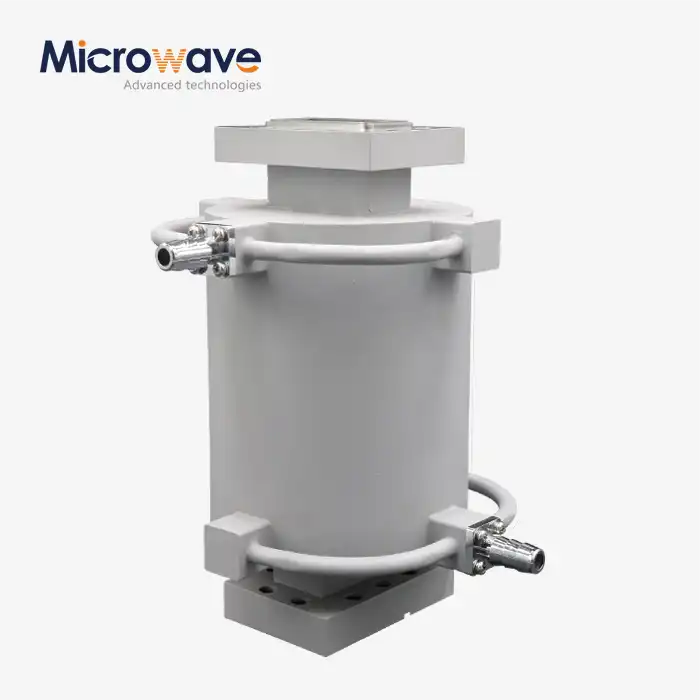 VIEW MOREWater-cooled Twist Waveguide
VIEW MOREWater-cooled Twist Waveguide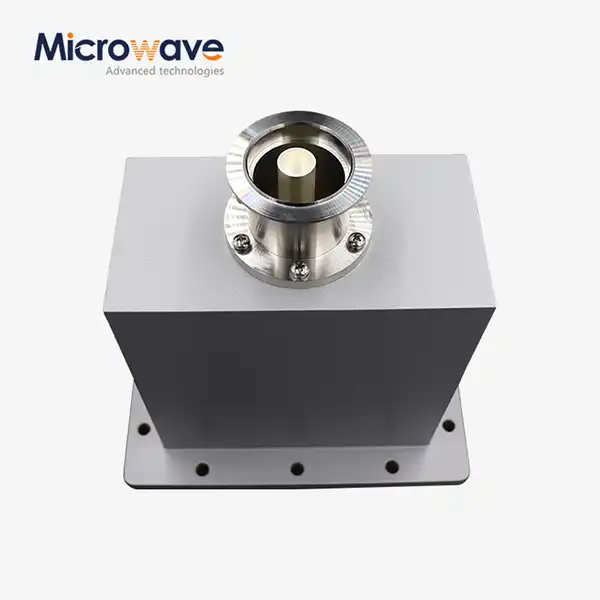 VIEW MOREEnd Launch Waveguide to Coaxial Adapter
VIEW MOREEnd Launch Waveguide to Coaxial Adapter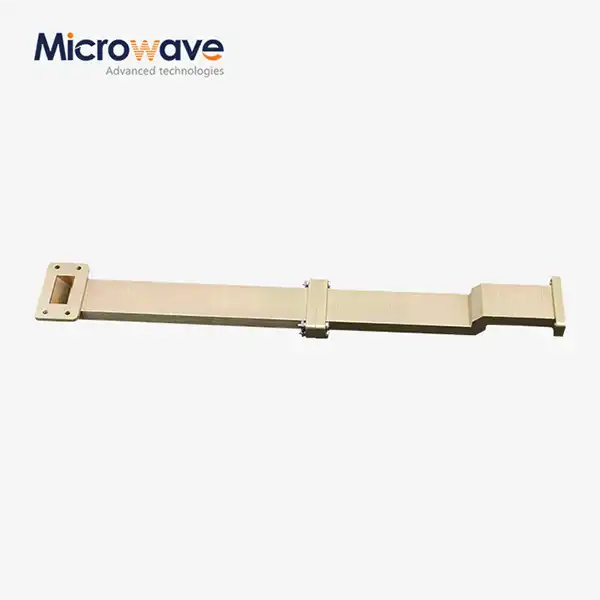 VIEW MOREWG Transition
VIEW MOREWG Transition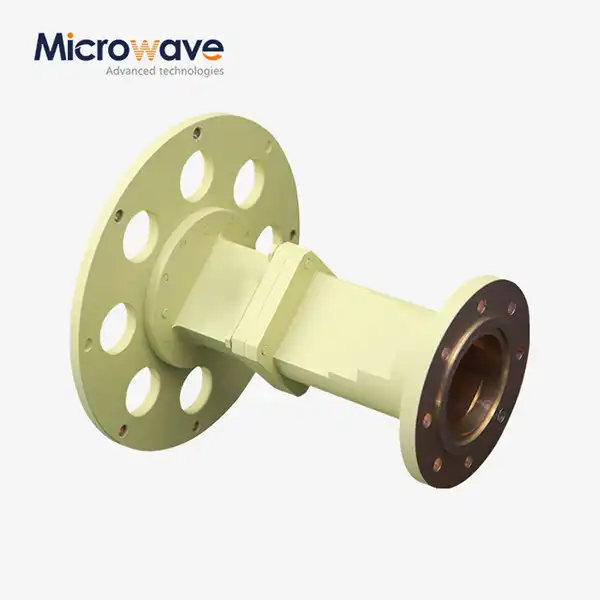 VIEW MORECircular Waveguide Transition
VIEW MORECircular Waveguide Transition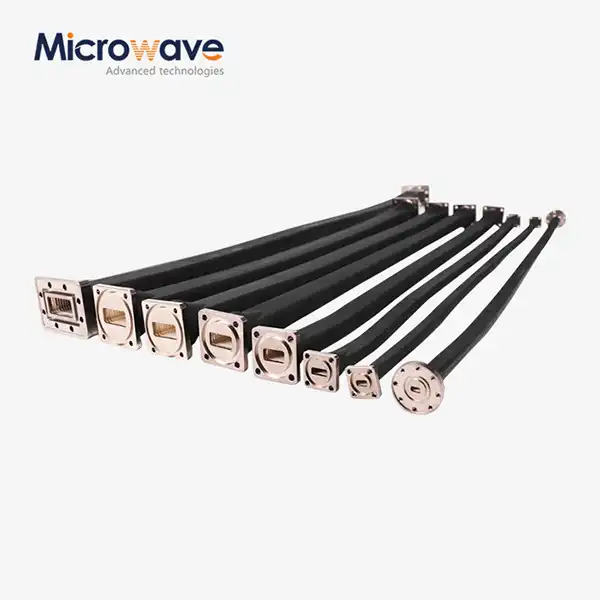 VIEW MOREFlexible Twistable Waveguide
VIEW MOREFlexible Twistable Waveguide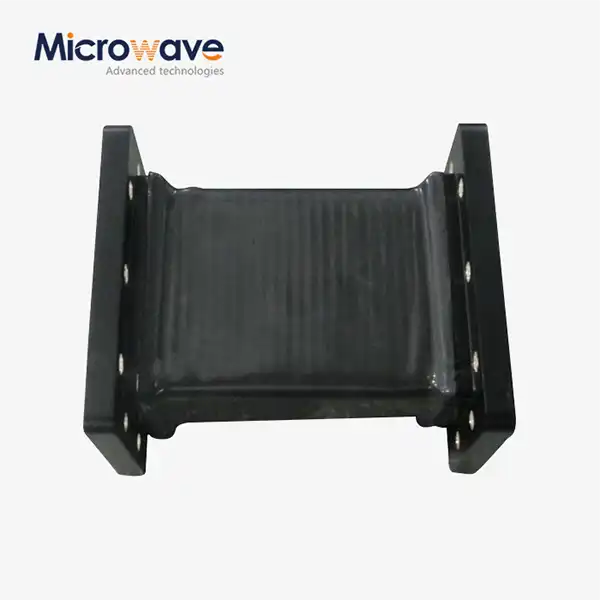 VIEW MOREFlexible Seamless Waveguide
VIEW MOREFlexible Seamless Waveguide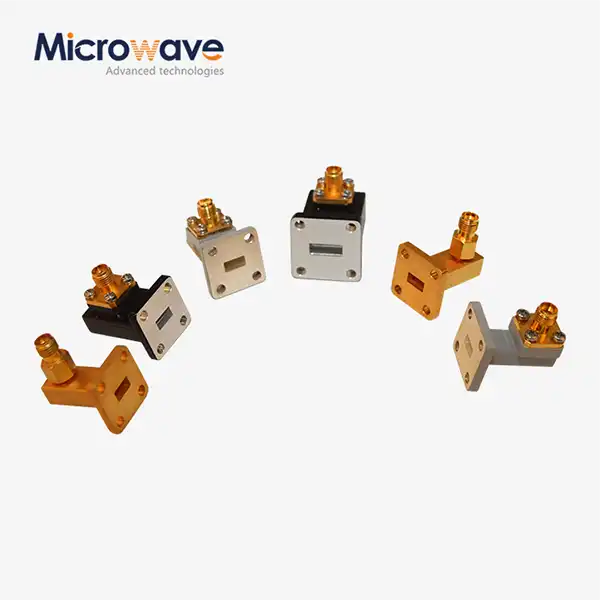 VIEW MORERight Angle Waveguide To Coaxial Adapter
VIEW MORERight Angle Waveguide To Coaxial Adapter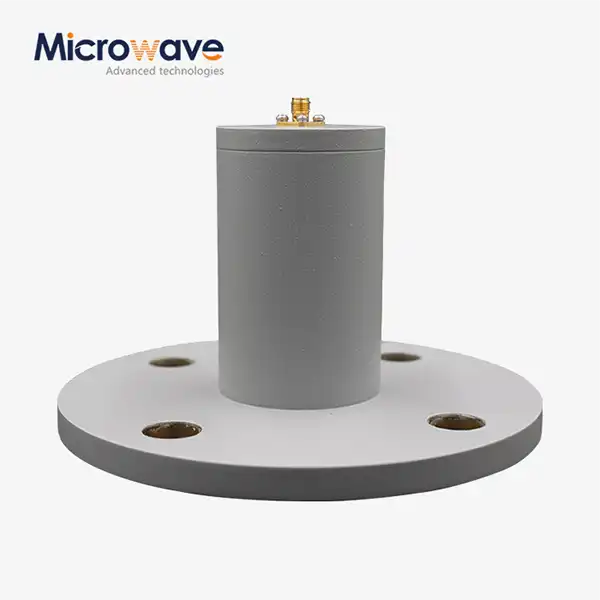 VIEW MORECircular Waveguide To Coaxial Adapter
VIEW MORECircular Waveguide To Coaxial Adapter




